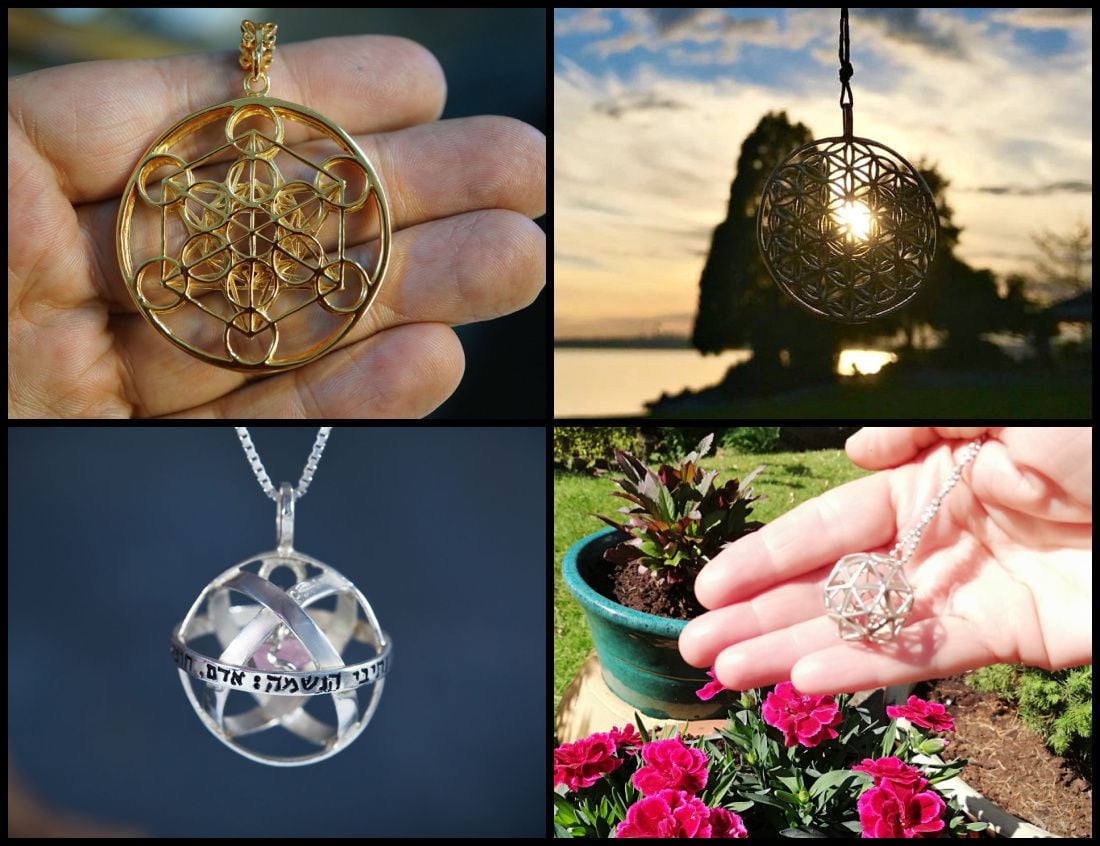Sacred geometry is a graphical representation that allows you to share and express diverse customs, insights, and methods of communicating the same geometrical, philosophical, aesthetic, and beautiful ideas that each of us understands and embodies uniquely. In addition, structures, designs, and patterns may be found in nature in the most minute particles, from the visible manifestation of life to the broader universe. The notion of interconnectedness is a constant reminder of our connection to the world and how we perceive beauty is part of that connection.
Sacred geometry is frequently known as the universe’s foundation. It is underlying everywhere, and therefore deeply affects our perception of beauty. We appreciate the beauty of people, nature, and objects with balanced structure, solid patterns, and proper angles because they are pleasing to the eyes and calmer to the soul.
What Is Sacred Geometry?
Sacred geometry is the exploration of the spiritual significance of certain forms. These forms and structures can be found extensively in nature. Sacred geometry may be found in the twigs of trees, the fascinating form of snowflakes, and the swirl of a snail’s shell. And far beyond naked sight, sacred geometry exists on a cellular level, as well as in stars and circling galaxies.
Sacred geometry has been identified in several religions as the pattern of existence, the origin or the beginning of all things. It is regarded as ancient wisdom that investigates and analyzes the energy structures that generate and unite all things and reveals the exact manner in which the essence of existence arranges itself.
The Human Perception Of Beauty
Beauty inclinations influence a primitive cognitive process that develops early in infancy, with individuals having an apparent instinctive capacity to identify someone or something as beautiful. This comprehensive view of beauty demonstrates how perception may shift based on the person, culture, or historical time. Researchers have found that the beauty of humans is related to the proportions of the body and face features, such as symmetry and form.
Current findings, however, suggest that what each individual thinks is beautiful is the result of a complex mechanism impacted by their surroundings and perceptual development. As a result, it is vital to emphasize that what each person perceives as beautiful is continually being changed by their personal experiences, adding to a mental image of what beauty signifies to a specific individual.
Sacred Geometry And The Perception Of The Beauty
Sacred Geometry discusses the elegance of the forms that surround us. This beauty may be observed in the harmonies, designs, and patterns’ formations, as well as the ancient principles of symmetry and balance. Sacred geometry allows for and explains the beauty that draws your attention. Patterns and forms that satisfy the eye may be seen in plants, sculptures, and architecture.
Moreover, the Greeks thought that beauty comprised three elements: harmony, proportion, and symmetry. The Golden Mean was produced by the ideal balance of these components, which was discovered frequently in nature and was sought by geometrical patterns.
Phi, Pentagon and Dodecagon in face structure
Dr. Stephen R. Marquardt is a world-leading expert on face analysis and attractiveness. He has researched human beauty in his dental and maxillofacial surgical practices for years and now studies full-time. His study involves cross-cultural beauty questionnaires, in which he discovered that all ethnicities shared the same opinions of face attractiveness. He also studied the face image from generation to generation.
With the beauty masks he designed and invented, he realized that beauty is connected to phi and can be characterized by both sexes, as well as all ethnicities, civilizations, and ages. The decagon and pentagon serve as the framework for this Mask. In all of their qualities, both of these geometric forms encapsulate phi.
Moreover, Dr. Marquardt’s website includes information on facial variances based on age, gender, and ethnicity. He notices that each archetype mask represents the non-ethnic shape of a race. The more a face resembles a mask, the more appealing it is to all people. However, no face, no matter how gorgeous or stunning, perfectly connects or fits the Mask. We are all different versions of the Mask. Some of us differ just a little, while others differ significantly, with most of us falling somewhere in the middle.
Conclusion
Sacred Geometry explores the underlying geometric and mathematical concepts upon which reality is built on. Humans are part of that reality and were developed with those concepts ingrained in us. It is just natural that our perception of beauty will have strong connections to those concepts.

